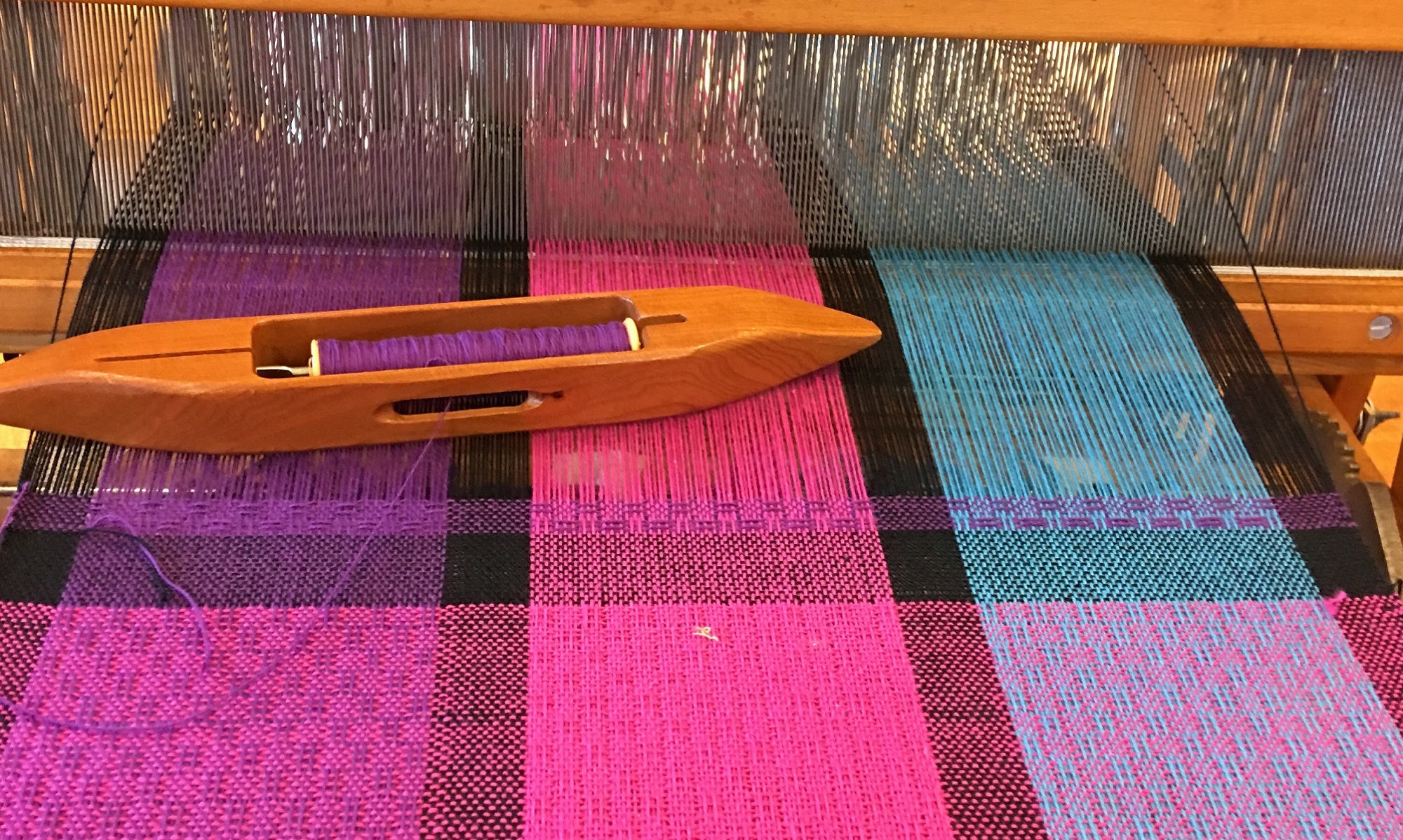 I have been going to Suzanne’s house on Wednesdays to teach her to weave on a floor loom. She had been weaving on a rigid heddle loom on her own, and decided to buy a floor loom. She found a used 4-shaft Macomber loom in okay shape, but it needed some TLC. I went over one day and gave her a written evaluation of what she had bought, what she still needed to do to get the loom in working order, and what she still needed to buy or make in the way of tools and accessories.
I have been going to Suzanne’s house on Wednesdays to teach her to weave on a floor loom. She had been weaving on a rigid heddle loom on her own, and decided to buy a floor loom. She found a used 4-shaft Macomber loom in okay shape, but it needed some TLC. I went over one day and gave her a written evaluation of what she had bought, what she still needed to do to get the loom in working order, and what she still needed to buy or make in the way of tools and accessories.
I showed her how to put the rachet brake back on the loom and sent her instructions to make lease sticks and a special raddle to work with her sectional beam. She cleaned up the wood with Old English; de-rusted and painted the shaft; de-rusted and polished the heddle bars; sorted heddles on a jig so that the tops and bottoms were aligned, alternated in an A and B pattern and then replaced them on the heddle bars; replaced the dirty old old apron and dry rotted apron cords with some Texsolv then was ready to weave a couple of weeks later. 
 The second time I went to her home, I taught her how to wind a warp on a warping board and warp back to front onto the sectional beam without any special sectional warping equipment. The warp went on easily and before she knew it, she had the heddles threaded and the reed sleyed in the pattern from my Dishcloth Cotton Point Twill Towels project that I use when teaching people on their own equipment. I call it a “get to know your loom” project.
The second time I went to her home, I taught her how to wind a warp on a warping board and warp back to front onto the sectional beam without any special sectional warping equipment. The warp went on easily and before she knew it, she had the heddles threaded and the reed sleyed in the pattern from my Dishcloth Cotton Point Twill Towels project that I use when teaching people on their own equipment. I call it a “get to know your loom” project.
The third time I was there, we troubleshooted for crossed threads and added the floating selvedges. She learned about the tie-up and treadling portions of the draft and how to change the tie-up to “walk” the treadles. We began with a plain weave hem and then she started weaving the first treadling pattern. She is now weaving away on the towels and will treadle some different patterns. The next time I go back, we will cut them off and she will learn about wet finishing and hemming the towels.


